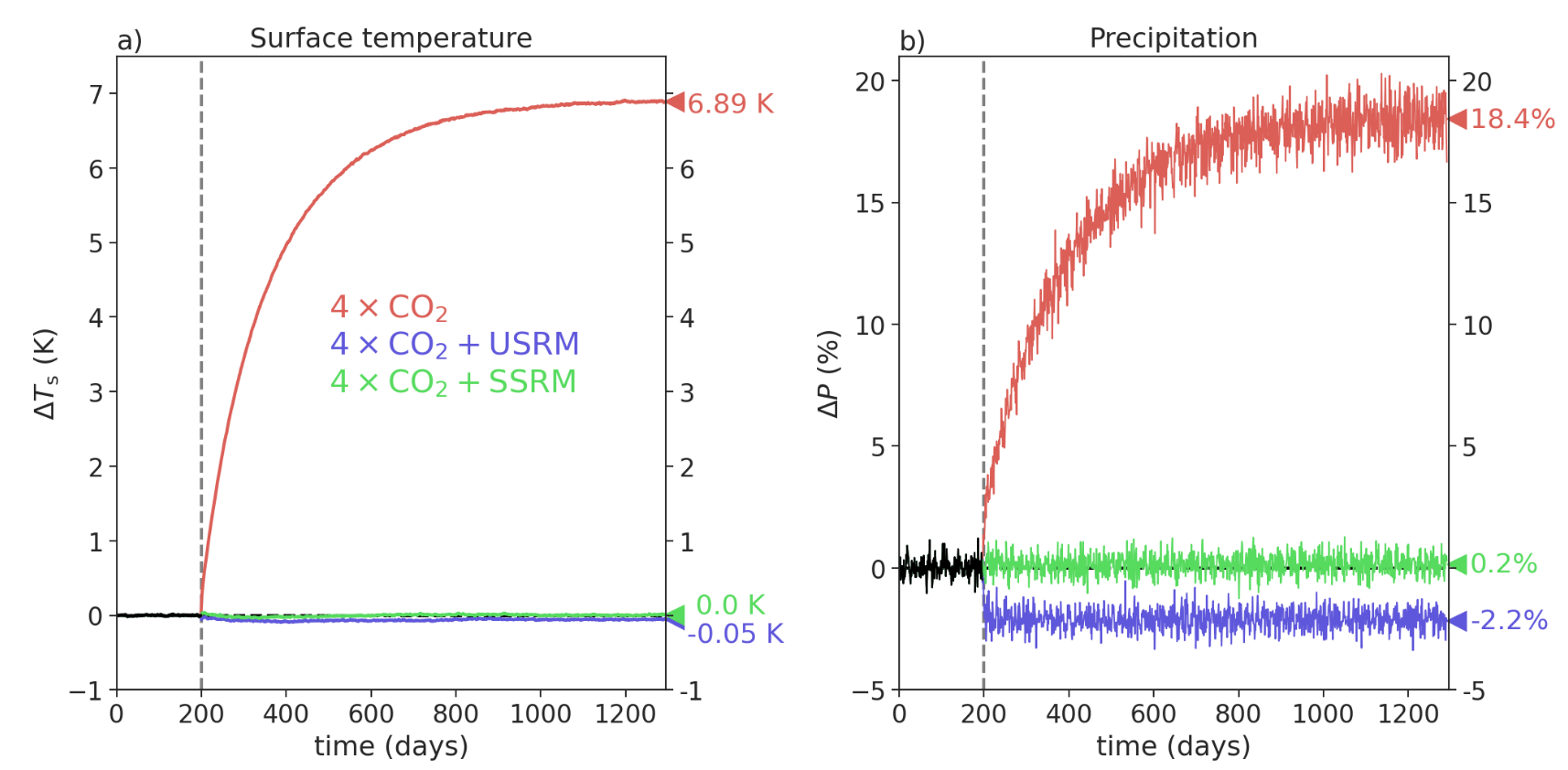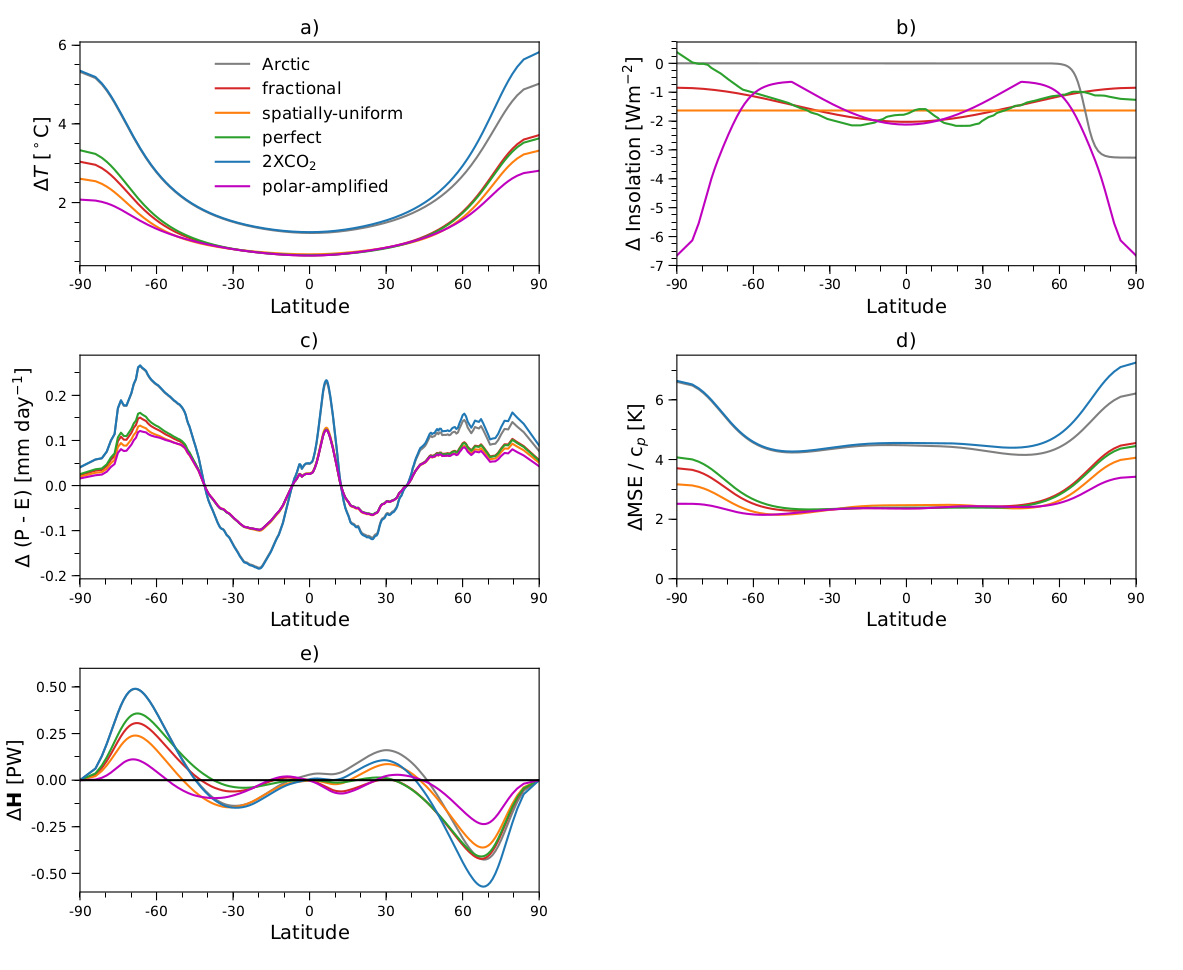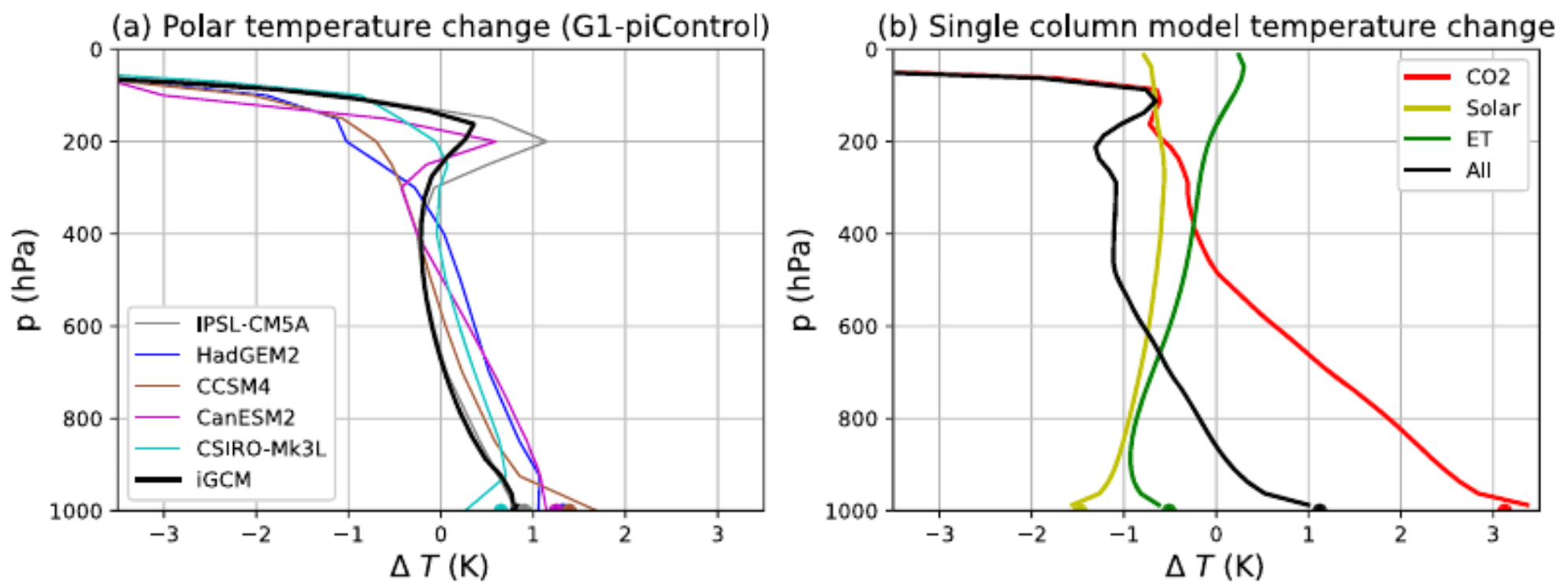Increasing the reflection of solar radiation on a large-scale – “dimming the Sun” – is gaining traction as part of a portfolio response to climate change. While not a substitute for cutting emissions and removing greenhouse gases from the atmosphere, we know from observing large volcanic eruptions, such as the Mount Pinatubo eruption in 1991, that adding enough aerosols to the stratosphere can produce a temporary reduction in surface temperatures. Climate model simulations have confirmed that solar geoengineering, or solar radiation management (SRM) can reduce the damages from climate change (e.g., Irvine et al., 2019) and a recent report from the National Academies of Sciences, Engineering, and Medicine report encouraged “cautiously pursuing” solar geoengineering research.
Many questions have to be resolved before we can feel confident deliberately intervening in the climate system in this way – political questions, economic questions, engineering questions, etc. But it also seems worth thinking more about SRM from the perspective of what we already know about the climate system. Much progress has been made in understanding the basic physics of the climate system’s response to increased greenhouse gas concentrations, and we should be able to use some of this knowledge to make informed guesses about how SRM scenarios might affect the climate system.
Here, we summarize some recent work which uses ideas from basic climate science to inform SRM research. This work shows that we can think about some of SRM's potential impacts before even running climate models, but also illustrates some of the ways reducing insolation differs from increasing CO\(_2\) as a climate forcing.
Direct and Indirect Effects
Increasing CO\(_2\) concentrations causes the surface of the Earth to warm up, and this warming has many negative knock-on effects (higher sea-levels, stronger storms, worse droughts, ...). But the higher CO\(_2\) concentrations themselves also affect the climate system, independent of any surface warming. This is referred to as the direct effect of CO\(_2\). Traditional SRM proposals counter the CO\(_2\)-induced warming but not the direct effects of CO\(_2\).

Figure 1: In an idealized model, a quadrupling of CO\(_2\) (red) leads to an increase in surface temperature (a) and in precipitation (b). Balancing the warming with a spectrally-uniform solar radiation management (USRM) leads to a decrease in precipitation (b, blue). By tweaking the spectral properties of the reduction in insolation (SSRM), the warming is balanced without reducing precipitation (b, green). From Seeley et al. (2021).
The direct effects of CO\(_2\) are generally small compared to the "indirect" effects of surface warming, but this is not always the case. One example is precipitation, which decreases in response to CO\(_2\)'s direct effect. In SRM simulations it is common to see a reduction in precipitation even when temperatures are restored to something close to "preindustrial" values, which could lead to worsening droughts or the collapse of monsoon systems. The heat released when precipitation forms is also an important driver of atmospheric waves, which play a crucial role in determining regional climate conditions. Again, even if temperatures were restored to their original values, weaker atmospheric waves would have serious consequences for the climates of many places on Earth.
It's also been suggested CO\(_2\)'s direct effect causes a reduction in low clouds, which warms the climate system as less solar radiation is reflected back to space. Dimming the Sun wouldn't counteract this reduction in low clouds, so more warming would have to be accounted for.
These responses to CO\(_2\)'s direct effect show that reducing the amount of solar insolation isn’t a perfect antidote to CO\(_2\), and the most common SRM proposals would lead to substantial residual changes in precipitation and regional climates. But the problem isn’t hopeless. Certain wavelengths of sunlight are absorbed more readily by the atmosphere than others. By selectively "tuning" which solar wavelengths are reflected, an appropriate SRM intervention can cancel out both the indirect warming effects of CO\(_2\) and the direct effects, potentially eliminating the overcompensation of precipitation, and restoring the stationary wave pattern and low clouds back to their original states (see Seeley et al. (2021) for more). Whether this is technically feasible from an engineering point of view is an open question, but CO\(_2\)'s direct effect needs to be accounted for when thinking about SRM scenarios.
Spatial Gradients
There's another mismatch between SRM and the climate’s response to elevated CO\(_2\) concentrations: annual-mean insolation decreases from the equator to the poles, but the poles experience the largest warming in response to CO\(_2\). This means that uniformly turning down the Sun is a very inefficient way of counteracting CO\(_2\)-induced warming, with the largest impacts at low latitudes. In terms of "bang for your buck" -- cooling per Wm\(^{-2}\) of insolation reduction -- the ideal SRM intervention would instead concentrate the reduction at higher latitudes.

Figure 2: a) Equilibrated, annual-mean responses of the surface temperature in a moist Energy Balance Model to the radiative forcing from a doubling of CO\(_2\) concentrations (blue curve) and to five SRM interventions (green, orange, red, gray and purple curves). Apart from the Arctic SRM intervention, the other four interventions have the same global-mean reduction in insolation, shown in panel b). c) Same as panel a) but showing the responses of Precipitation - Evaporation. d) Same as panel a) but showing the responses of the moist static energy. From Lutsko al. (2020).
But the story is more complicated than that. Together, the atmosphere and the ocean transport heat from the warm tropics to the cooler poles. Heat transport can be thought of as a diffusive process, and depends on the temperature gradient between the tropics and the poles. The storm tracks which dominate weather at midlatitudes are a key part of this process, as the net effect of storms is to transport heat polewards. Anything which changes temperature gradients also changes the position and strength of mid-latitude storms, which has major consequences for mid-latitude weather. The most common SRM proposals actually seem to produce a weakening of the mid-latitude storm tracks.
So it’s not enough to concentrate the insolation reduction at high latitudes. The ideal SRM intervention would restore spatial temperature gradients back to their unperturbed values, thus restoring storms and other aspects of the atmosphere’s large-scale circulation. Simple energy balance models, with diffusive parameterizations of heat transport, can be used to explore how different profiles of insolation reduction affect temperature gradients. Again, the engineering questions of how to achieve different profiles of insolation reduction are complex, but simple climate models can be used to make a first guess at the optimal profiles of insolation reduction.
The Arctic is Complicated
Deploying SRM in a limited way is sometimes proposed as a way of “refreezing” the Arctic, and restoring sea-ice loss. We already know one reason why this is a potentially misleading idea: heat transport. Locally cooling the Arctic-only would increase the equator-to-pole temperature gradient, leading to enhanced heat transport that counteracts the cooling. So, while the most effective SRM profiles focus the insolation reduction at high latitudes, some cooling of lower latitudes is also needed to account for heat transport.

Figure 3: Residual warming arises from bottom-heavy CO\(_2\) warming, while solar forcing and atmospheric energy transport changes have more uniform cooling. (a) Temperature difference between solar geoengineered simulation (G1) and control simulation (piControl) in the Arctic (>80° north) for an idealized GCM (black) and comprehensive GCMs (colors, listed in legend). (b) Decomposition of polar temperature change using a single column model: increased CO\(_2\) (red), reduced insolation (yellow), decreased energy transport (green), and total (black). The dots at 1000 hPa show the surface temperature change. From Henry and Merlis (2020).
To make matters worse, the Arctic's climate is special in that different forcings produce different vertical temperature responses. In the tropics, the vertical layers of the atmosphere are coupled to each other, such that any climate forcing -- from greenhouse gases, insolation reduction, aerosols, etc -- produces a response with the same vertical structure. But at high latitudes the vertical layers of the atmosphere are decoupled, and different forcings produce different responses. CO\(_2\) forcing produces a very bottom-heavy response at high latitudes, whereas the response to changes in solar insolation is more vertically-uniform. When both are implemented at the same time, the net effect leaves a residual warming of the surface. This explains why many SRM studies have found a residual warming of the high latitudes, even when surface temperature changes are otherwise compensated.
It is unclear how to account for this issue. Spectrally-filtering the insolation reduction, similar to countering CO\(_2\)'s direct effect, might work, but this has yet to be studied in detail. More generally, while Arctic Amplification -- the fact that high Northern latitudes warm up faster than anywhere else on Earth -- is one of the most robust features of climate change simulations, it is still unclear what exactly drives it. Many potential factors have been identified, but there is no consensus as to how these combine to give the strong Arctic Amplification seen in observations and in models. As progress is made in quantifying the drivers of Arctic Amplification, we might feel more confident interfering with the Arctic's climate. But for now, the uncertainty around the Arctic's climate suggests caution in deploying SRM, even in a limited sense, to counteract the rapid climate changes at high Northern latitudes.
Use Climate Science to Constrain the SRM Design Space
SRM can be thought of as a design problem: the goal is to find a climate intervention that counteracts the effects of increased CO\(_2\) concentrations while minimizing unwanted side-effects. As these examples hopefully show, the starting point for doing this should be using what we already know about the climate system to guide our search of the SRM "design space". We know that CO\(_2\) has direct effects on the climate system that are independent of surface warming. We know that the high latitudes warm more than the tropics, and that latitudinal temperature gradients are a crucial part of the climate system, particularly for the atmosphere's circulation. And we know that high latitude climates are complicated, and respond differently to different climate forcings. Results like these from basic climate science can help us search the SRM design space more efficiently, minimize unexpected side-effects and clarify how model biases and errors affect SRM simulations.